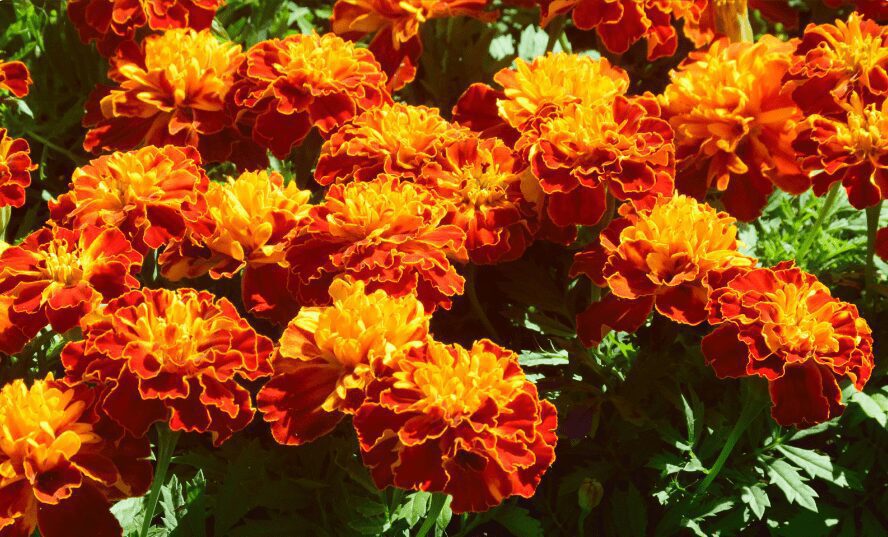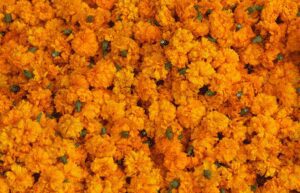
Marigolds are well-known for their beautiful blossoms and fragrant aroma, but are they indeed capable of deterring pests from your garden?
Can marigolds keep garden pests at bay? There are four significant advantages to planting marigolds in your garden.
Marigolds are versatile flowers that look beautiful in various settings, from hanging baskets to ornamental borders. We can even include them in our vegetable gardens.
These beautiful flowers may provide color and variation to a patch of growing crops, but how effective are they at repelling pests?
The four primary advantages of planting them in your garden.
Garden pests are one of the most aggravating issues that gardeners confront, especially those that grow various plants, foliage, and vegetables.
There are several natural solutions to keep unwanted visitors away from developing plants, whether they are aphids, slugs, or rats.
Companion planting is one of the most successful ways to keep garden pests at bay, but what makes marigolds beneficial? How can you put them to use in your backyard?
Various plant combinations help to ward off everything from mice to bugs that visit your crops, and marigolds are simply one of the more visually appealing pest cures to attempt.
Marigolds include several essential components that repel pests, including:
- They recognize this leafy annual for its large flower heads and pungent, spicy scent.
- The distinct odor stays in the air and has natural insecticidal properties that are thought to suppress pests such as whitefly, blackfly, and various aphids.
- Whiteflies also do not like the natural limonene production of marigold plants.
- They generate compounds that resist nematodes.
- We can sow marigolds in vegetable patches to keep dangerous nematodes at bay.
- This stunning flower creates natural nematicides in its roots, often only practical near the plant.
- Some French marigold cultivars release more toxins than others, making them more successful at lowering the number of pest nematodes in the soil.
Tangerine, petite gold, petite harmony, Goldie, and nemagold are some of the most effective cultivars, and they all operate best when planted near together in a solid block.

They attract carnivorous insects.
Marigold plants’ vivid yellow and golden hues appeal to pollinators, but they can also attract natural predators of harmful pests.
Ladybugs, lacewings, hoverflies, parasitic mini-wasps, and other predators will eat aphids and other destructive pests lurking around your crops.
How To Use Marigolds To Fight The Slugs
This is the most natural pest management method, and it is incredibly beneficial for expanding the ecosystem in your garden.
Marigolds attract slugs, which is why they are frequently in use as ‘trap’ plants to distract from nearby crops.
Planting a ring of marigolds around the perimeter of a bed will help protect cabbages, lettuce, and other leafy greens from these slimy bugs.
It will draw the slugs to the colorful blossoms, but if you know where to search for them, you can easily remove them.
We can plant marigolds with what?
Planting marigold cultivars with different crops can help manage pests that can harm your crops.
Marigolds pair well with the following foods:
- Marigolds are best planted around brassica crops to cover their appealing perfume with the petals’ overwhelming odor.
- To keep whiteflies away, surround tomatoes with French marigolds, whether they’re potted or growing as vines in your vegetable patch.
- Plant a lot of marigolds around your sweet strawberries to attract a lot of pollinators.
- French marigolds are the ideal cultivar to match with potato fields to repel eelworms.
Plant Profile
- Scientific name: Tagetes patula
- Family: Asteraceae
- Common names: French marigold
- Native to: Mexico and Central America
Description: This herbaceous annual has showy flowers with an upright growth habit and a small taproot. The lower leaves are opposite, while the upper leaves are alternate.
They are elliptical, with deep indentations that make them appear pinnate or featherlike.
The leaves have an intense scent and feel velvety to the touch, with serrations and oil glands on the edges. Daisy flowers perch atop tubular branch ends; their heads comprise several smaller blossoms.
Ray flowers have large petals encircling the perimeter of the bloom, and disk flowers with considerably smaller petals in the middle in single types. On ray and disk flowers, semi-double and double types have more giant petals. Each flower is between 1/2 and 2 inches wide.
Fruits are little black achenes that look like tiny, thin sunflower seeds and are tipped with brushy bristles that capture and distribute animal fur.
Requirements
Hardiness: USDA hardiness zones 9-11. Marigolds are frost-sensitive and are best grown in the transition seasons in South Florida.
Height/width: Mounding plants are usually 6 to 12 inches tall and 8 to 18 inches wide.
Light: Full to part sun.
Soil/Moisture: Tolerant of most soils, so long as they are not soggy. Somewhat drought-tolerant, although good growth and flowering require regular watering.
Culture/use: French marigolds brighten any location where planted. They are suitable for beds, containers, and borders. They are best planted in this part of Florida between the seasons.
Final Word
Cold weather inhibits growth, and they melt in the high humidity and heat of mid-to-late summer. Plant from small plants or seeds; they proliferate from either.
I lovely planted marigolds with blue flowers, such as perennial sages. Plant on 6- to 12-inch centers as ornamentals and fertilize at the beginning of the season with a slow-release, balanced product.
Deadheading or removing old blooms promotes the growth of fresh flowers. Some landscape professionals prefer not to mulch annual beds, but the benefits of weed suppression, soil cooling, and water conservation outweigh the difficulty of taking back mulch when replanting.
Notes: French marigolds are good companion plants or cover crops in the veggie garden. Research has shown them to reduce the population of some types of root-parasitic nematodes.
To be effective pest-reducing agents or companion plants, we must plant them thickly around and among the crop plants.
Better use is a cover crop where they can grow thickly over the entire garden and plowed under to decompose and work their magic. Turn them under when the plants and blooms are lush and thick.
If You Are Interested In Planting Marigolds, Check the Offers Below.
Last update on 2024-11-21 / Affiliate links / Images from Amazon Product Advertising API































